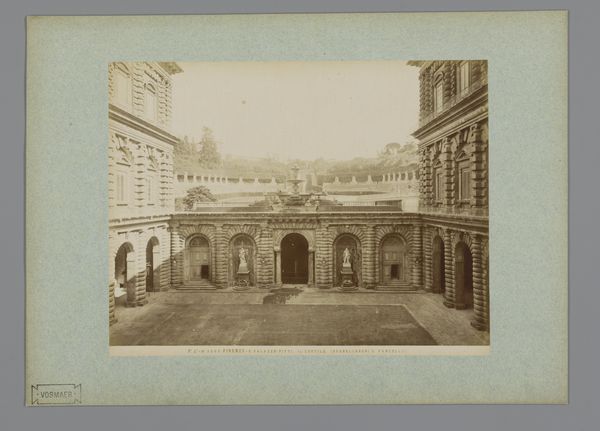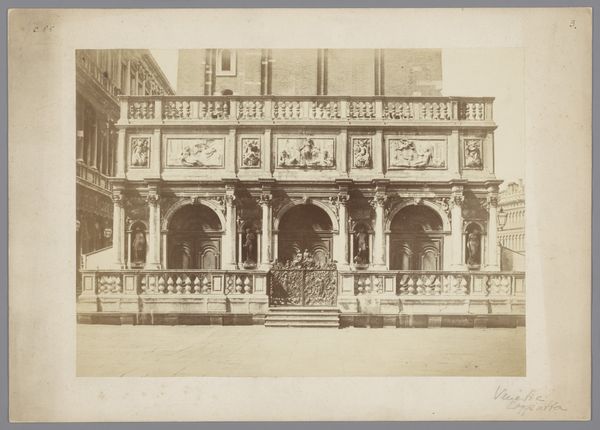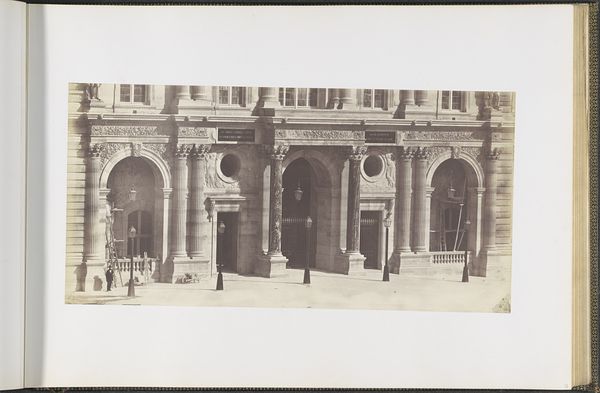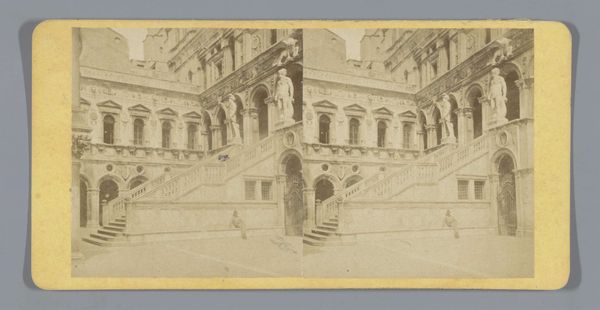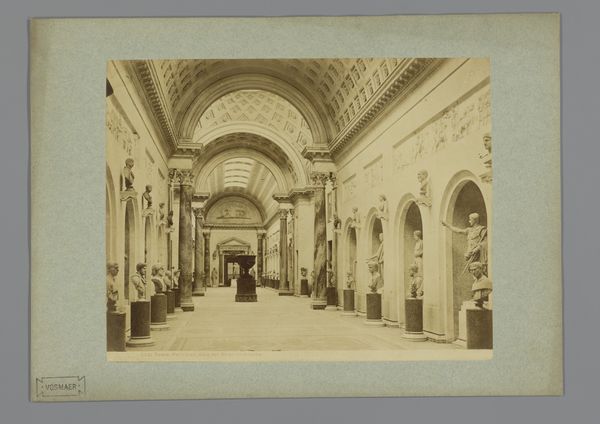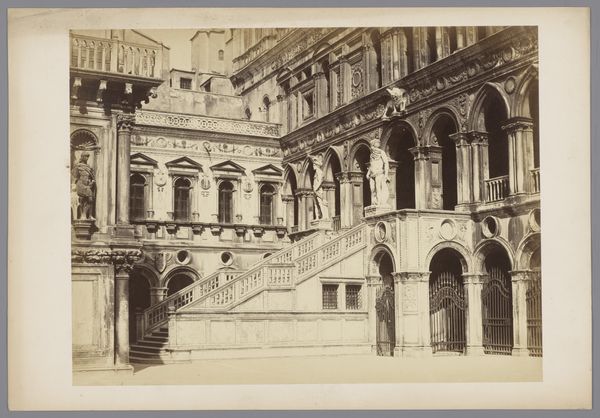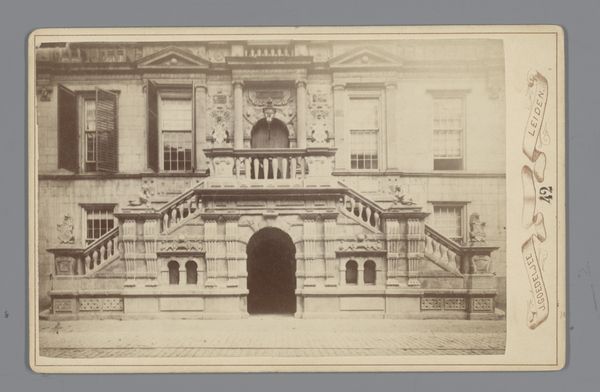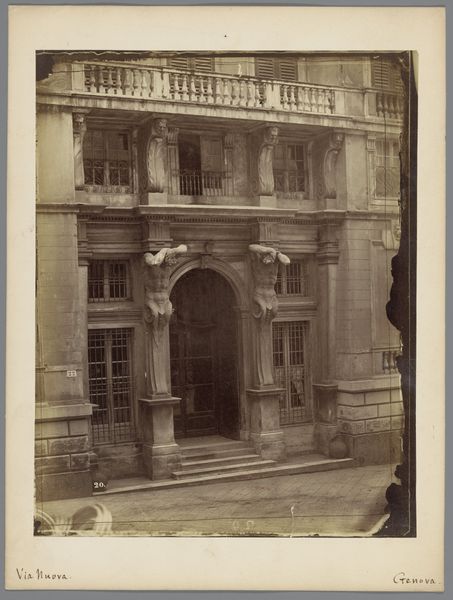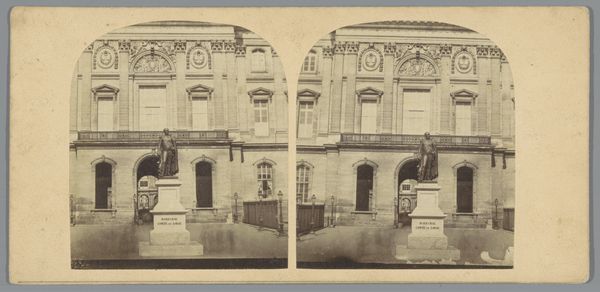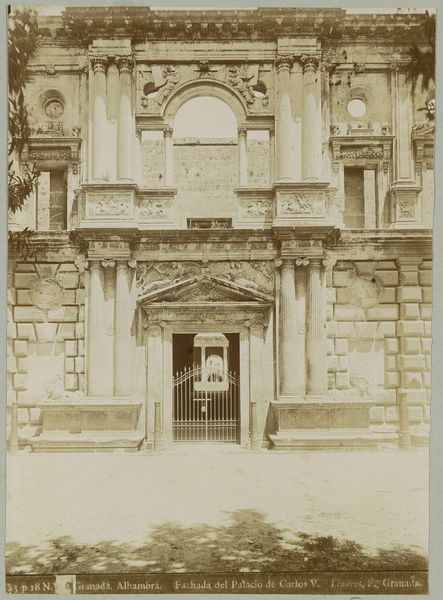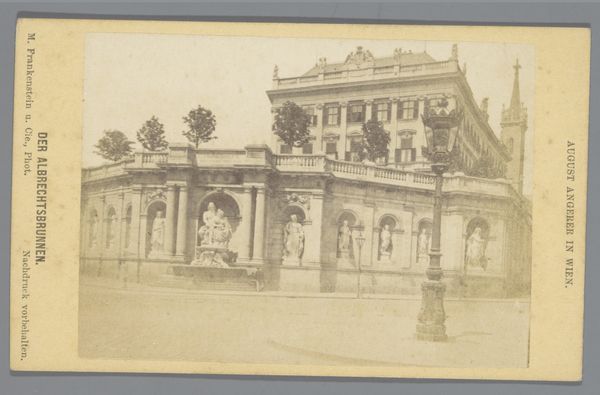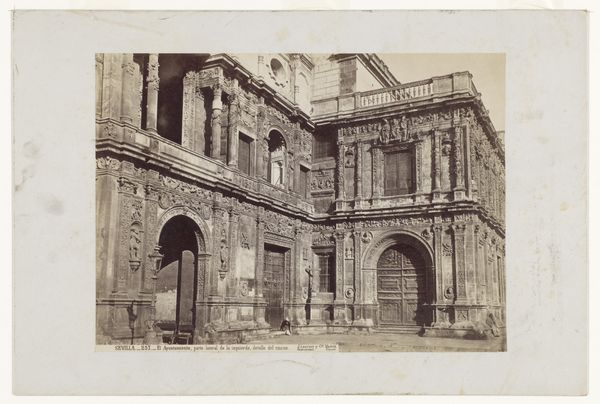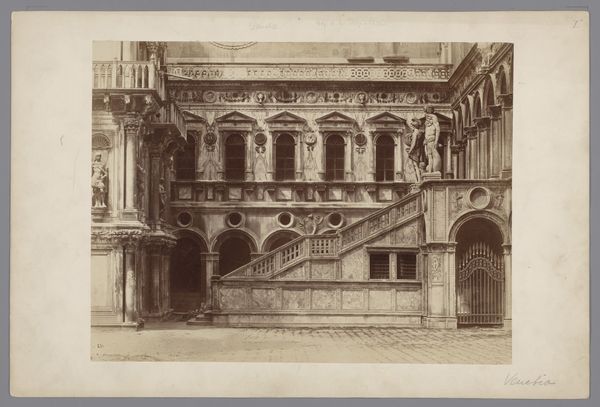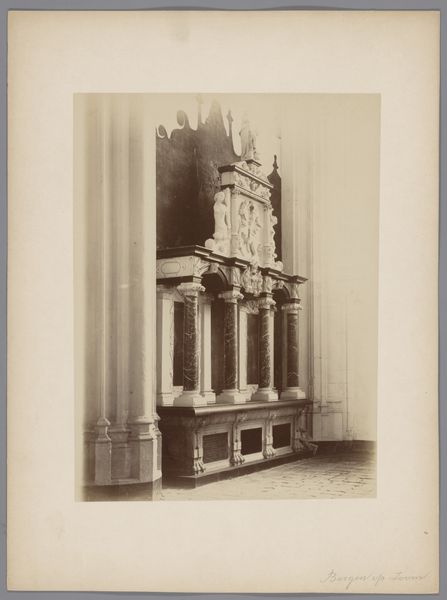
photography, albumen-print
#
dutch-golden-age
#
photography
#
cityscape
#
albumen-print
#
realism
Dimensions: height 168 mm, width 108 mm
Copyright: Rijks Museum: Open Domain
Editor: This albumen print, "Ingang van het stadhuis te Leiden" by Jan Goedeljee, probably taken between 1879 and 1900, presents the facade of a city hall. It's quite detailed, almost hyper-realistic for a photograph of that period. The abundance of ornaments suggests important histories. How might we interpret this focus on civic architecture through a symbolic lens? Curator: That's perceptive. The architecture itself speaks volumes. Notice how the entrance is elevated, reached by elaborate stairs. In many cultures, stairs are potent symbols of ascension, of moving from the earthly plane to a higher, perhaps more spiritual or governmental one. Editor: So the climb up those stairs isn't just literal; it's also symbolic? Curator: Precisely. Think of ziggurats or even church steeples – the impulse to elevate is often tied to notions of power and connection to the divine, or, in this case, the authority of the governing body. The profusion of ornamentation—statues, reliefs—these act as visual cues, reminding citizens of the values, history, and perhaps even the mythology that underpins the city’s identity. Can you detect any recurring motifs? Editor: I see what looks like... lions? And what appear to be figures engaged in various activities. Curator: The lion, a symbol of strength, courage, and vigilance, appears across countless cultures to represent guardianship and the power to defend. And indeed, the human figures are visual anchors to local tradition, serving as mnemonic devices. Now, why use photography, with its supposedly inherent realism, to capture these symbols? Editor: Perhaps to lend greater authority and objectivity to the message? Curator: Exactly. Photography, in its early days, was often seen as an irrefutable record of reality. So, by photographing the city hall, with all its symbolic trappings, Goedeljee isn't just documenting a building; he's reinforcing the cultural narratives that it embodies, offering a visual anchor to civic identity during a period of potentially rapid change. What does this reveal about the photograph's power? Editor: That a photo can go beyond mere representation and solidify cultural narratives, making history and identity visually accessible. I will think twice when looking at photographs now.
Comments
No comments
Be the first to comment and join the conversation on the ultimate creative platform.
